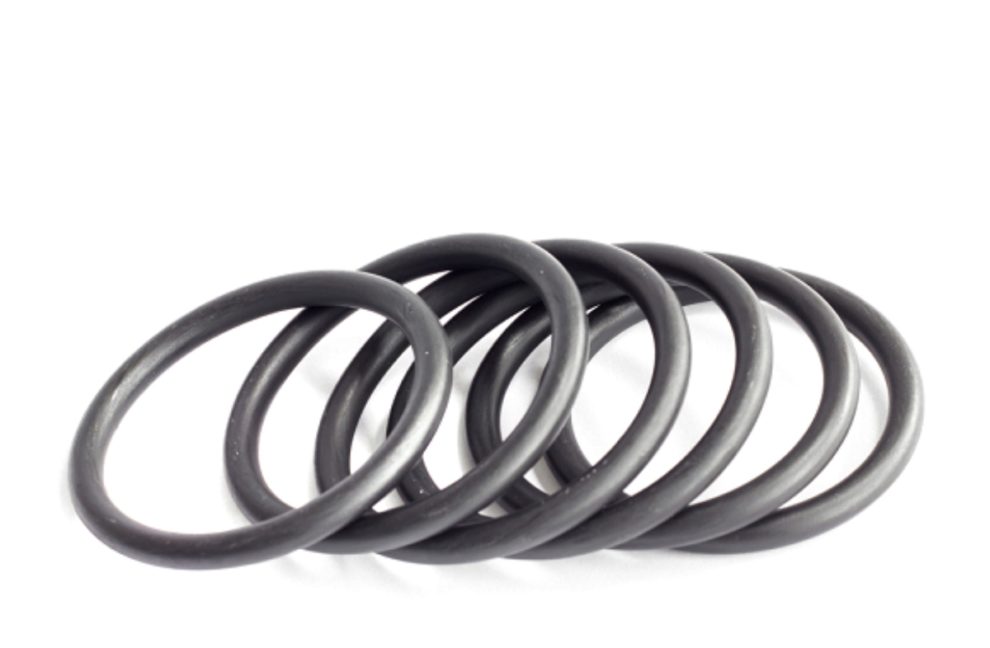O-rings are considered critical components in multiple industries, including the food industry. Several processing techniques, such as bottling, canning, fermentation, freezing, pasteurization and steaming, are used to transform raw food materials into shelf-ready products. And the little food-grade o-rings, installed throughout the processing line, make sure that end products are safe for human consumption. They are used by food manufacturers to prevent contamination.
Let’s take a look at four common materials for food-grade o-rings.
What Are Food-Grade O-Rings?
Food-grade o-rings are Food and Drug Administration (FDA) compliant and safe for direct contact with food. For an o-ring to be compliant, it should be made of material, both synthetic and natural, that can withstand the environment in which it will be used and recognized as very safe for use in food applications/processing or manufacturing units or food packaging.
Top-quality o-rings designed for the food industry are non-toxic, non-allergenic and odor-free. They can also withstand severe chemical environments, extreme temperatures, cleaning agents, aromas, greases and bacteria. They meet specific purity requirements and hygienic design standards as well. If they are not made of the right material, a manufacturer may face equipment failure and contamination, product waste, downtime, injuries and hefty penalties.
According to the FDA, there are many sealing materials deemed safe for the food industry. Some of the popular materials used to formulate FDA-approved o-rings are:
Silicone
O-rings made of silicone are most commonly used in the food industry. It offers good resistance against bacteria, mold, chemicals and oils, including animal and vegetable oils and fats. Also, silicone o-rings offer heat resistance up to approximately 210 degrees Celsius and cold resistance up to approximately -50/-60 degrees Celsius. Silicone can also meet the high purity and hygiene requirements of the FDA.
Nitrile Rubber
Nitrile rubber is produced from two monomers: acrylonitrile and butadiene. This material is known for its good abrasion behavior and tensile strength, and resistance to oil. Nitrile offers heat resistance up to 120 degrees Celsius, while in cold conditions, it may perform in the range of -20 to -55 degrees Celsius. O-rings made of this material are best suited for repetitive use.
Ethylene Propylene Diene Monomer
EPDM, short for Ethylene Propylene Diene Monomer, is a copolymer of ethylene and propylene. It is also an FDA-approved material. EPDM o-rings are widely used in the food industry as they are odorless, tasteless and can withstand a range of temperatures. They perform efficiently in the -40 degrees Celsius to 140 degrees Celsius range.
Fluorocarbon
O-rings made of fluorocarbon are safe for repetitive use and resistant to a wide range of chemicals and oils. In addition to that, they are also resistant to ozone, weather, fungus and mold. The temperature range for Viton o-rings is between -20 degrees Celsius and +250 degrees Celsius. And as Viton offers excellent consistency, durability, and resistance, it is a good material for creating food-grade O-rings.
Selecting the Right Sealing Material
In a food application, never use o-rings that are not formulated using FDA-approved materials. It may have huge consequences, including hefty fines and imprisonment. Choose only food-grade o-rings to prevent issues because of seal failure. Food-grade o-rings meet intensive quality and cleanliness standards and are designed to work under extremely hostile conditions.
